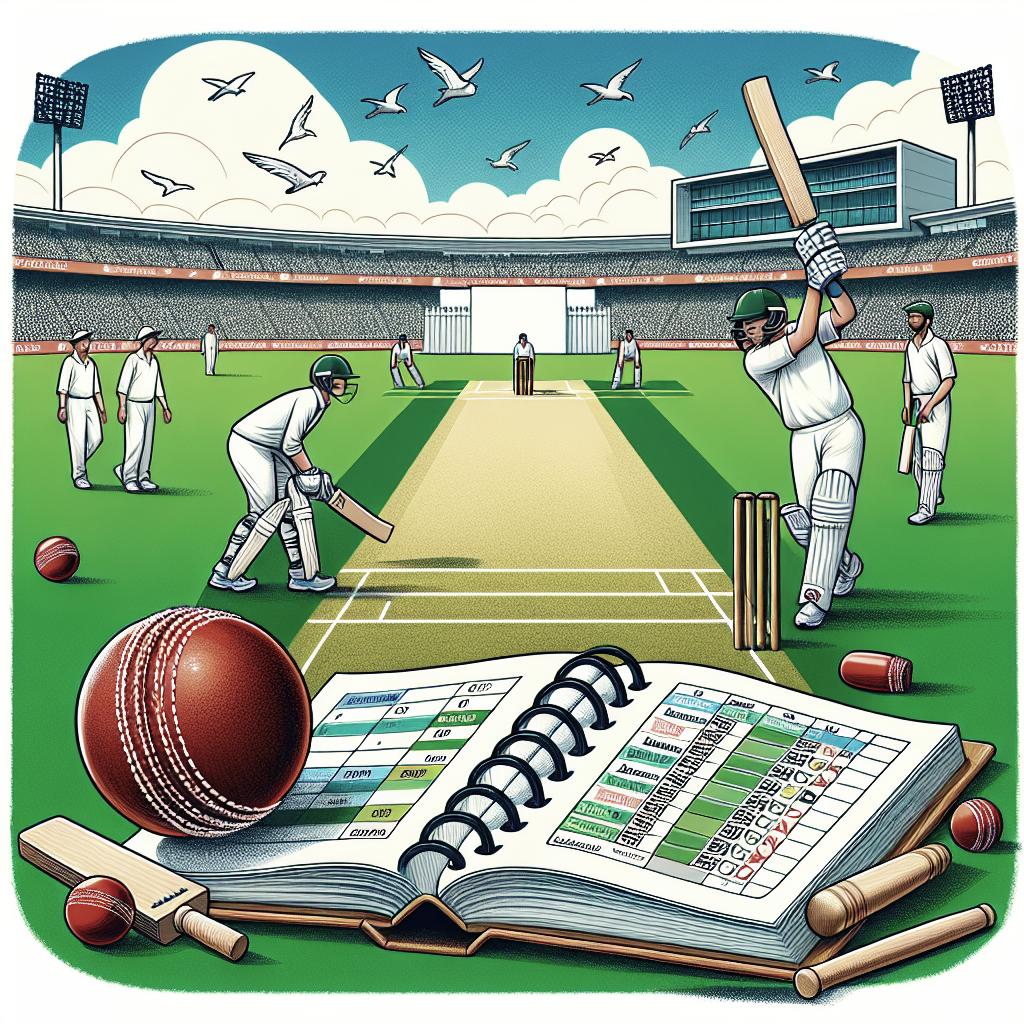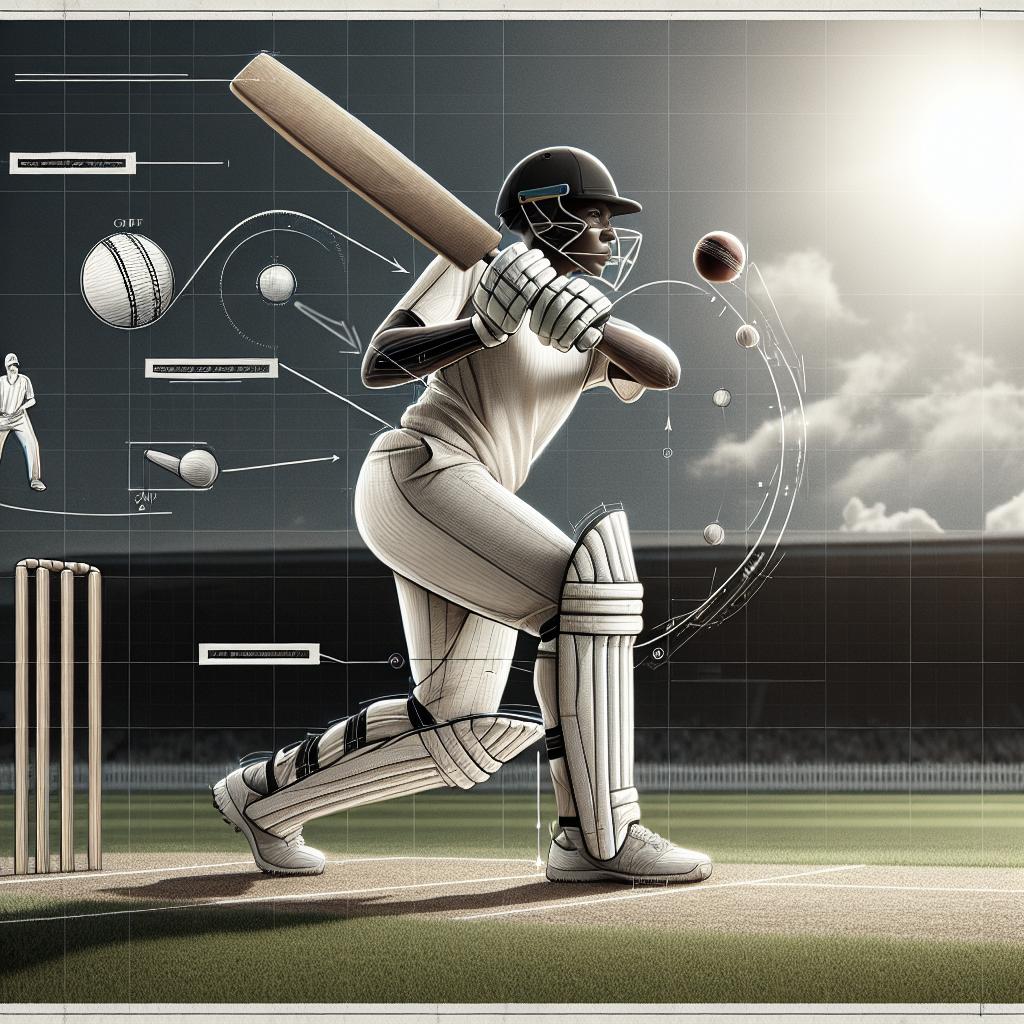<>
Cricket is a game rich in history and complexity, often bewildering for newcomers. Understanding how the scoring works is the gateway to appreciating this fascinating sport. In this post, we’ll break down the fundamentals of cricket scoring, explain how to read a scorecard, delve into the utility of various cricket charts, and touch upon key records and averages. We will also guide you through keeping score during a match. Whether you are an aspiring cricket enthusiast or merely curious, this guide aims to clarify the intricate world of cricket scoring.
The Score
At the heart of cricket scoring is the basic concept of runs. Batsmen accumulate runs by hitting the ball and running between the wickets or hitting the ball to the boundary. A single run requires both players to switch ends, while a boundary hit automatically awards four or six runs, depending on if the ball rolls or flies past the boundary line.
Another vital component is wickets. These represent the number of batsmen who have been dismissed, either through being bowled, caught, run out, or through various other methods. A team’s score is typically expressed in a format such as 150/4, where the first number indicates runs scored and the second the number of wickets lost.
The Scorecard
The scorecard is the comprehensive record of a cricket match, listing every detail from the runs scored by each player to the manner of their dismissals. It catalogs the performance of both the batting and bowling teams. A scorecard generally includes columns for the batsman’s name, the number of runs scored, balls faced, and the bowler responsible for each wicket.
Understanding a scorecard allows fans to appreciate individual performances and the overall flow of the game. Many scorecards will also highlight key moments, like partnerships between batsmen or a bowler’s spell. By familiarizing yourself with the components of a scorecard, you can gain deeper insights into the strategies and turning points within a match.
Useful Charts
Charts like wagon wheels and Manhattan charts offer visual representations of a player’s or team’s performance. A wagon wheel chart maps the direction and type of each shot played by a batsman, providing a visual breakdown of their scoring areas. This can help analyze a player’s strengths and weaknesses.
On the other hand, Manhattan charts represent the runs scored per over, resembling a city skyline, hence the name. These charts are beneficial for understanding the rhythm of an innings, showing whether a team was consistently scoring, or if there were standout overs that swung the game.
Averages and Rankings
A player’s batting average and bowling average provide a snapshot of their performance. The batting average is calculated by dividing the total number of runs scored by the number of times the player has been dismissed. Higher averages denote consistent run-scoring ability. Similarly, a bowler’s average is calculated by dividing the number of runs conceded by the number of wickets taken. Lower averages indicate effective performances.
Rankings also play a critical role in cricket, offering a way to compare players from different teams and eras. Organizations like the International Cricket Council (ICC) publish rankings for teams and players across various formats of the game, providing fans with a metric to measure greatness.
Key Records
Cricket is a sport steeped in statistical achievements and records. Individual records, such as the most Test runs held by Sachin Tendulkar or Brian Lara’s 400 not out in a single innings, are celebrated and often referenced. Team records, like Australia’s 758/8 declared, set the benchmark for cricketing excellence.
Staying aware of these records can make following the game more engaging, as fans can better appreciate when new milestones are approached or surpassed. Records add a historical context to the game, allowing comparisons across different eras of cricket.
Keeping Score
Keeping score in cricket is both an art and a science. Traditional scorebooks require notations for every ball bowled, run scored, and wicket taken. Modern technology, however, has simplified this with digital platforms and apps that make the process more accessible and user-friendly.
Regardless of the method, scoring requires attentiveness and understanding of the game’s nuances. Recording extras like wides and no-balls, as well as noting down partnerships and bowlers’ spells, contribute to an accurate and comprehensive record of the match. By practicing keeping score, observers can gain a deeper, more engaged appreciation of the sport.
Next Steps
| Section | Summary |
|---|---|
| The Score | Explains the basic concepts of runs and wickets, and how they contribute to a team’s total score. |
| The Scorecard | Describes the elements of a scorecard and how it records the details of a cricket match. |
| Useful Charts | Offers insight into visual aids like wagon wheels and Manhattan charts that help analyze cricket matches. |
| Averages and Rankings | Covers the importance of batting and bowling averages, along with player and team rankings. |
| Key Records | Highlights significant individual and team records in cricket, adding historical context. |
| Keeping Score | Details the process and importance of keeping score, both traditionally and digitally. |


